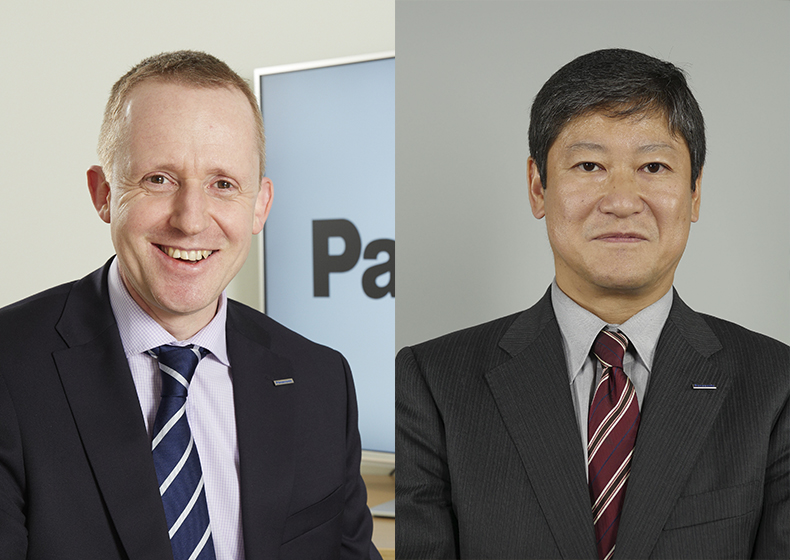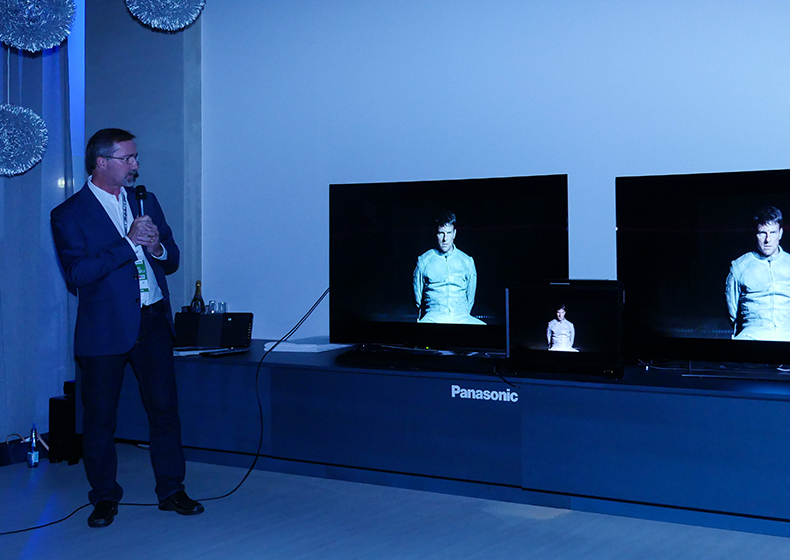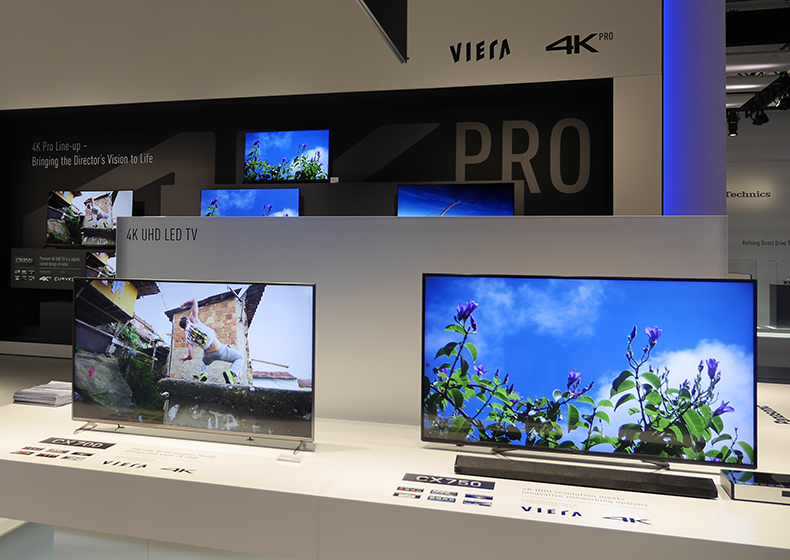
At IFA 2015 in Berlin earlier this month, we took the opportunity to talk to Panasonic and find out a little more about the new OLED. We also quizzed the company on its plans for the TV market and the TV technologies making all the noise in 2015 - from OLED to 4K and HDR.
We put our questions to Masahiro Shinada, director of Panasonic’s TV business division, and David Preece, marketing director of the company’s consumer division.
What Hi-Fi?: Let’s talk OLED.
Masahiro Shinada: OLED has huge potential for the future. Basically, this CZ950 is a trial model. We will gauge the response of the customer, but we are confident. When we stopped production of the PDP (plasma display panel), we lost our position in the European market as the company for high picture quality. We must recover our position in Europe by launching OLED – the successor to the plasma.
David Preece: The CZ950 is going to come to market very soon. We’ve been showing OLED prototypes for several years, but this one is coming to the UK in October and will cost around £8000.
MORE: Panasonic TX-65CZ950 hands-on review
OLED and Studio Master Pro

WHF: There was talk of joint OLED research with Sony, which fell through…
The latest hi-fi, home cinema and tech news, reviews, buying advice and deals, direct to your inbox.
DP: That’s not the basis of this product. This is not a Panasonic panel, but it has been designed for Panasonic and selected out of the production run particularly to take the very best quality.
WHF: This is an LG panel...
DP: Let’s talk about why this product differentiates from the LG product, and why we believe that it’s quite a breakthrough in TV technology now.
It’s a combination of the positive attributes of the OLED, where you can control every pixel individually, and our 4K Studio Master Pro Processor – with the added expertise of the engineering teams that achieved amazing things with plasma.
We’ve had a huge amount of expertise in being able to control every pixel and get the best out of plasma, and there are similarities with OLED.
WHF: What’s inside the Studio Master Pro processor?
DP: The priority with the product is to have a picture that meets the studio director’s original intention, the most accurate reproduction of what they would perceive as the film output. We have a facility – the Panasonic Laboratory in Hollywood – where a great deal of work is done with colourists to grade and refine the final colour output as it should be seen in the cinema.
It’s the same care and attention that goes into creating the output on these panels from the Studio Master Processor. The first area to consider is black control. One of the big benefits of OLED is that you can have true blacks. Complete black. But what’s most difficult is the huge processing power and very clever algorithms that control the shift from the perfect black through to the very dark grey.
It’s all of the grades of black where you see shadows and where you see light coming through blacks, dark scenes in films, which is very difficult to control. That’s where we had a huge amount of expertise with plasma.

WHF: What about colour reproduction?
DP: The Studio Master Processor can manage with professional 3D look-up tables, so that the number of registration points is 8000. Which is about 80 times more than the registration points for colour from a conventional processor. The ability to manage the grades of colour through the entire spectrum is way better than it has been before. We’re showing that now on the AX802 (LCD) panel.
For the 4K Pro models it’s also about the combination of the processor with the wide phosphor panel, which can deliver up to 98% DCI (Digital Cinema Initiatives) colour reproduction from an LCD. That processor is unique to us – even if it’s not our panels, it’s our specifications.
WHF: What does OLED mean for the business?
MS: OLED is still a very small part of our business. It’s in the investment stage. But for Panasonic, quality is very important. It’s our backbone. We have decided to invest in OLED, to enhance the picture quality.
This CZ950 is just a TV, but the OLED panel has a huge potential as an interactive device. It’s very bright. You can bend it, you can write on it, put it on the wall. We are now researching various ways to use it.
Unfortunately the price of OLED is still very expensive, and the market share is still very small. But in my view OLED is very good for the business-to-business sector. Consumer business area is very small – in the B2B area, OLED panel’s potential is huge, and we are seeking those opportunities.
For the consumer, we will expand the line-up. This year, it is only in 65 inches. We are now thinking of 55 inches. The line up is very important to expand the OLED business. Panel cost is still very unclear, however.
MORE: OLED TV - everything you need to know
HDR: high dynamic range

WHF: Everybody is talking about high dynamic range being the next big thing. When will that happen?
DP: We are talking to the broadcasters of 4K about when they will start streaming in HDR quality and how we can be compatible, but it’s still at the talking stage.
MS: HDR is in a very early stage. We need to inform customers about the value of HDR. This technology is very interesting and many things are possible. But the UHD Alliance has not agreed on a specification.
WHF: What about HDR on Ultra HD Blu-ray?
MS: We have a prototype 2016 model. For some people, it’s very good. For others, it’s not enough. It needs more testing and development. Various parties must agree on the fixed standard.
DP: The latest is that we’re looking to bring the prototype out some time soon, whether it’s this year or next year. We have a strong intention to launch 4K Blu-ray into the market but we’ve got work to do to perfect it. What we don’t want to do is to launch a secondary solution or a model that hasn’t got longevity. There’s work to do to bring the product to market at a price that is somewhat reasonable.
WHF: Now the spec is finalised, what's next for UHD Blu-ray?
DP: Now it’s a question of content, getting 4K content, HDR content, authored onto Blu-ray. Perfecting the authoring process is quite challenging. We have to work together with Hollywood, and when there’s enough commitment to move forward with enough titles, we can bring the product to market. I think maybe the middle of next year would be a reasonable hope. We can’t say any specifics but we’re hopeful.
In terms of what that product should bring – the best in terms of picture performance, better than any lower-bitrate streaming solution – there has to be sufficient commitment that the line-up of titles launched on UHD Blu-ray is compelling enough. On the authoring process itself, our Hollywood Lab has worked very closely with the studios to ensure the authoring gives the best results. Then it’s simply about bringing hardware to market that’s affordable.
MORE: HDR content arrives on Amazon Instant Video
MORE: Ultra HD Blu-ray - everything you need to know
Panasonic's next step

WHF: Still a while to go, then. What’s in the immediate future for Panasonic?
MS: The price of OLED means it will be a premium part of the line-up. The next step is to bring forward LCD technology to get it better. We have some ways to improve LED quality. We probably cannot fully reach OLED quality but we can improve LED quality by using our local dimming technology. We are now planning to launch the 2016 models next spring. Those models have new local dimming technology: we’ll aim for near-black picture quality.
DP: The 4K market is growing very rapidly. We’re having great success with the top-end panels that have just come to market, but also from 40in upwards. 40in 4K has been doing very well for us, which in turn is making us consider the balance between 4K and HD. More towards 4K, really. Our own share is growing rapidly, and our 2015 line-up has been well received.
We’re also launching the Freeview Play, built into our TVs, as a unique point. Nobody else will have Freeview Play before Christmas. Then there’s the Studio Master Pro processor. As successful as it is, logically we’d try to expand, continuously striving for the closest to what the director intended. If we can get THX certification lower down the range that would be amazing as well.
MORE: Panasonic 40in 4K TV review
MORE: Panasonic 4K OLED hands-on review
See all our Panasonic news and reviews
